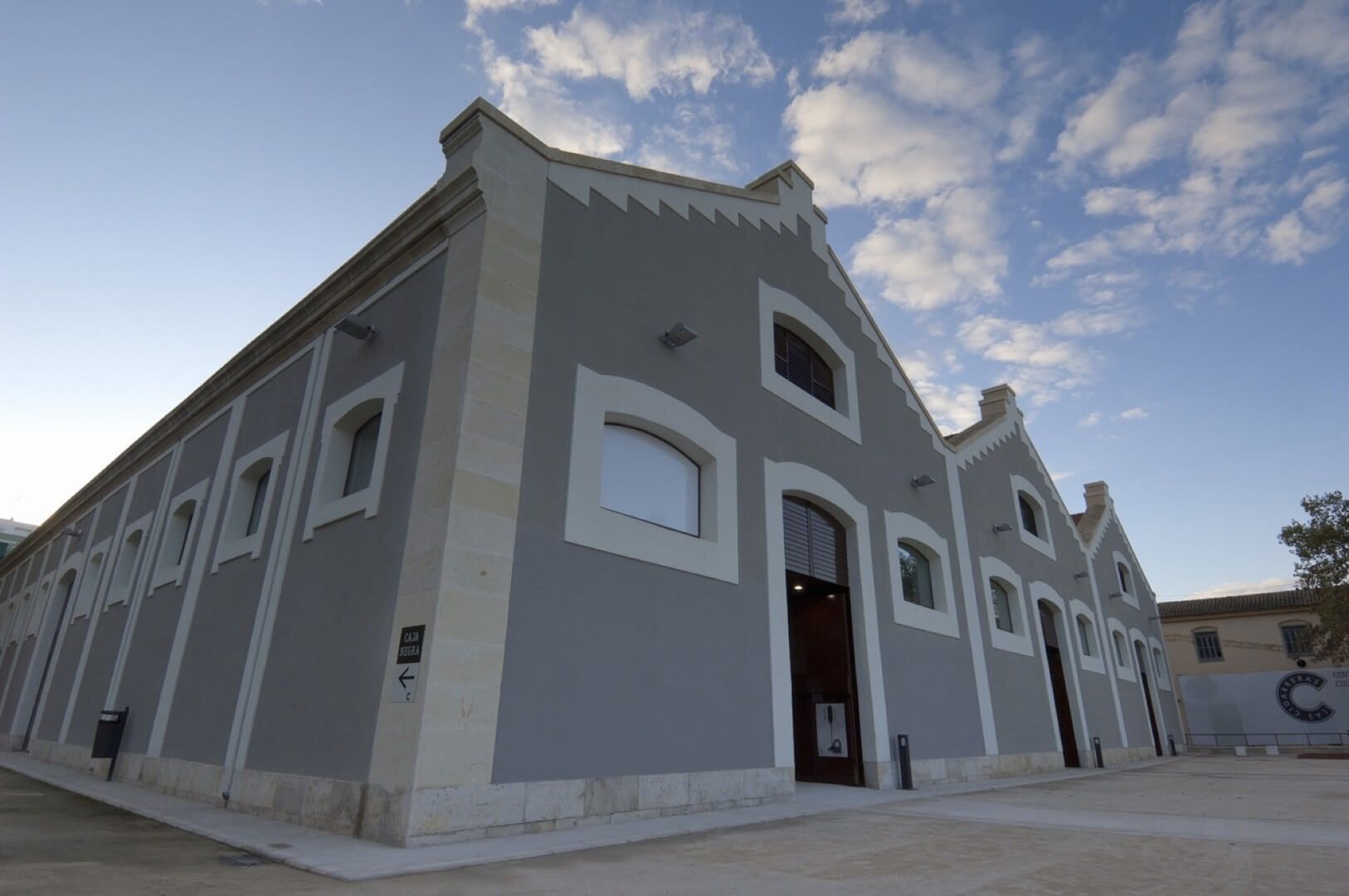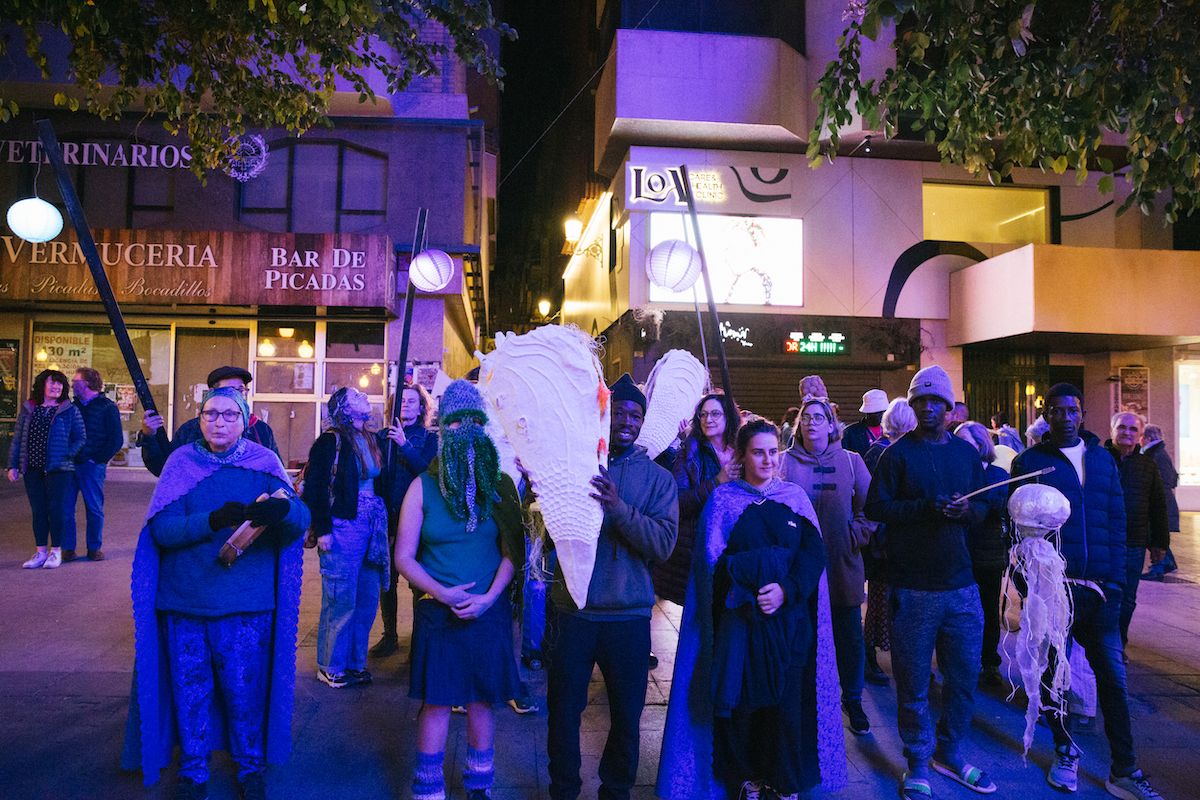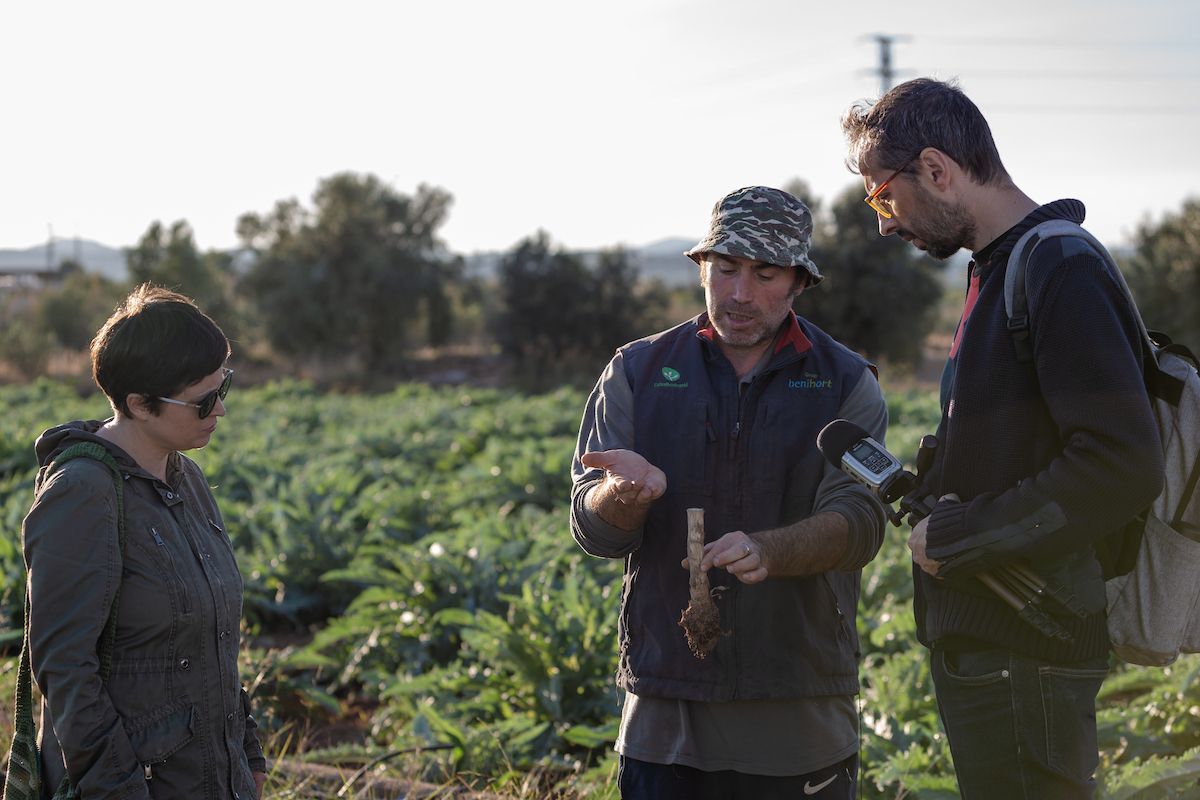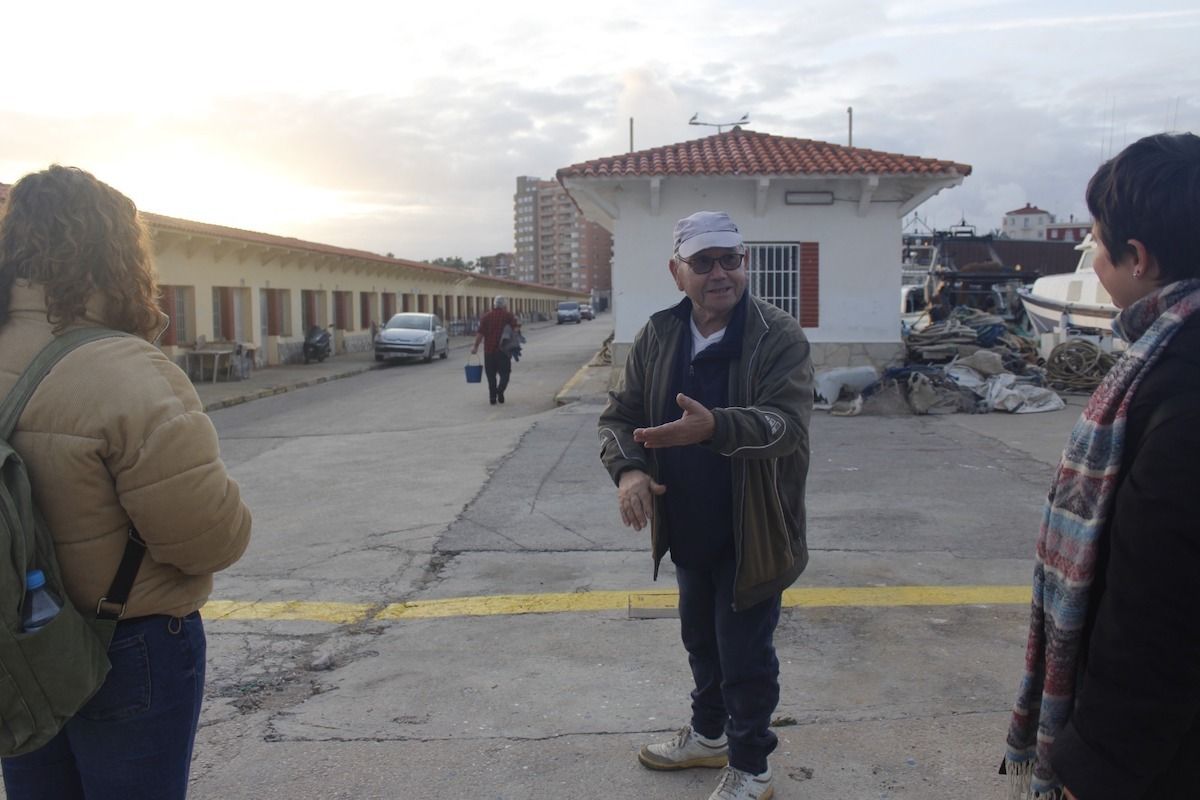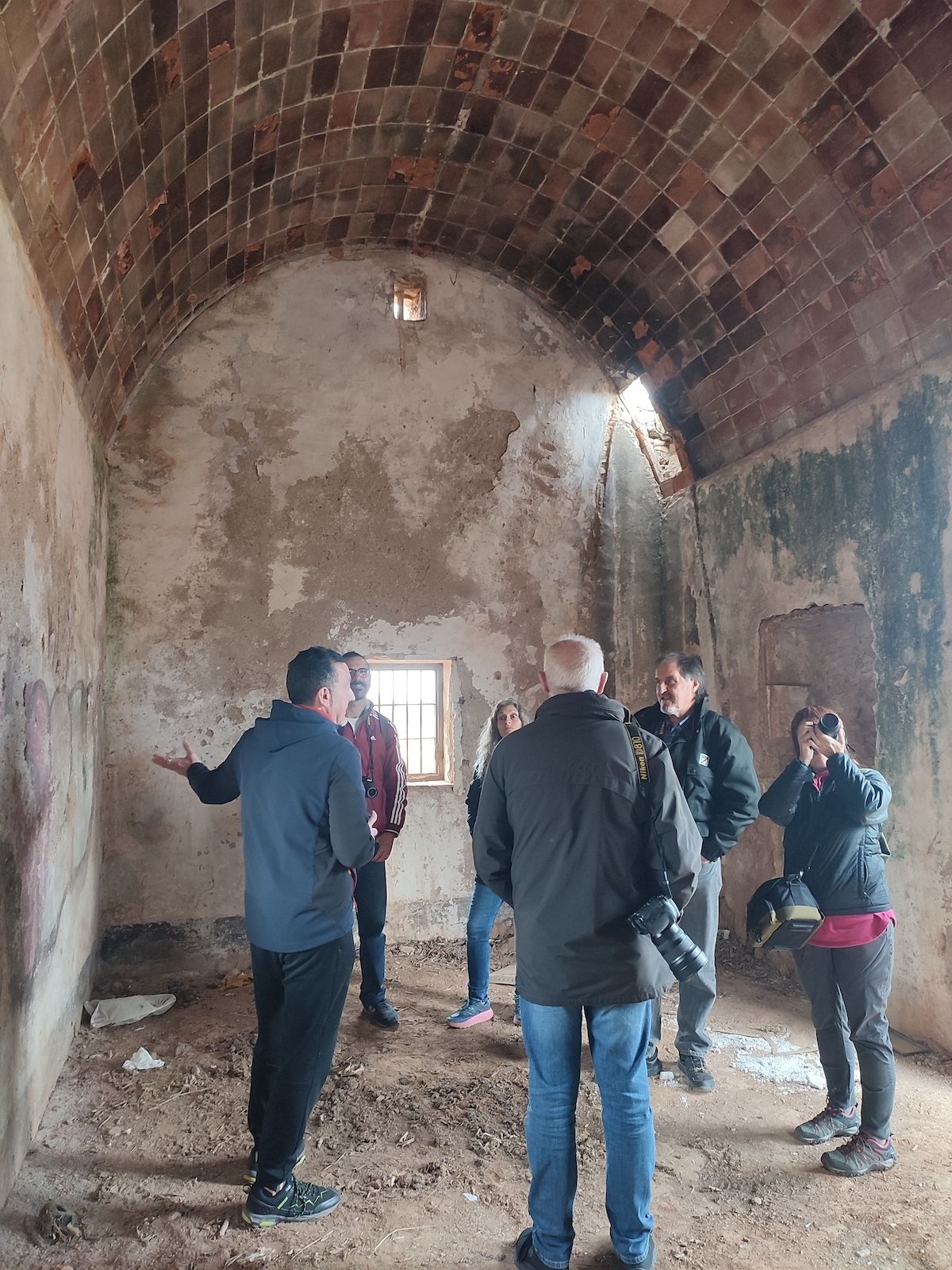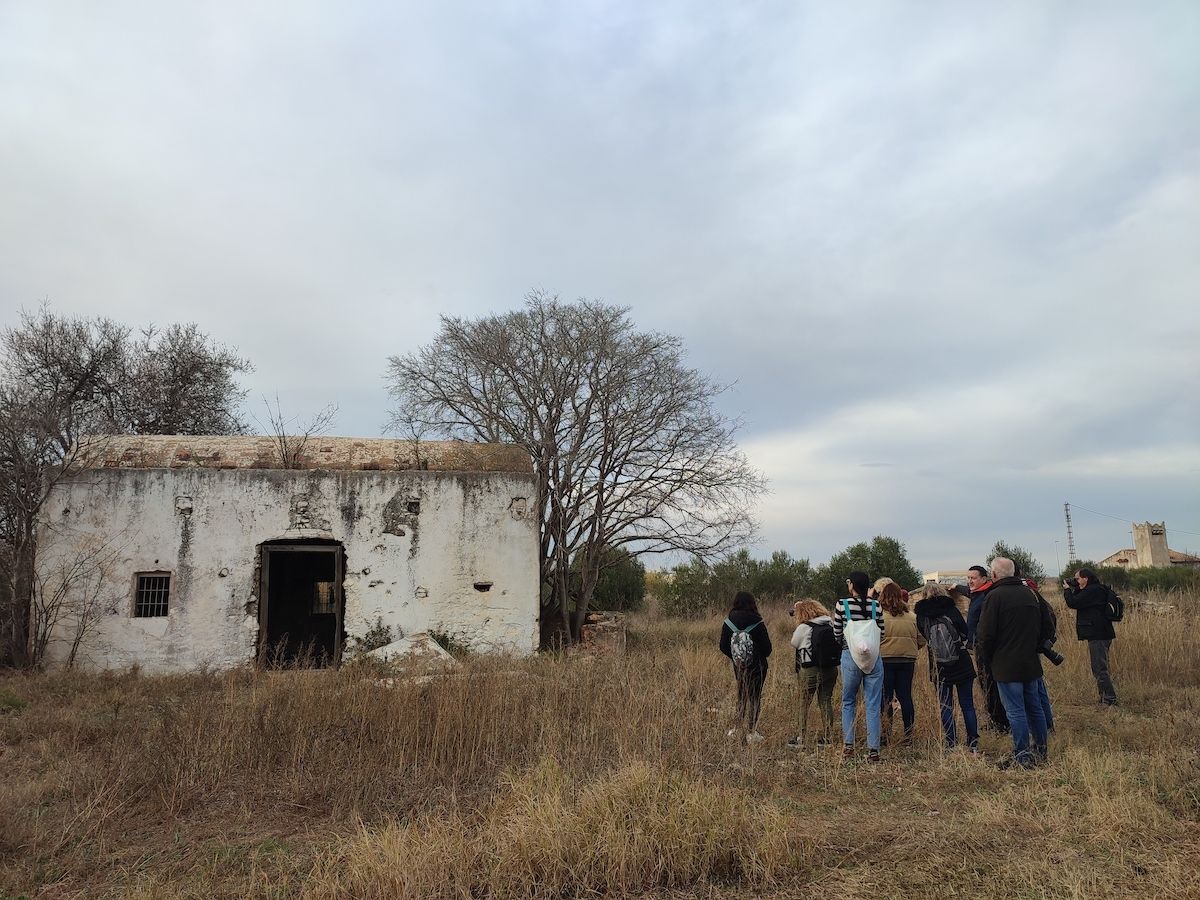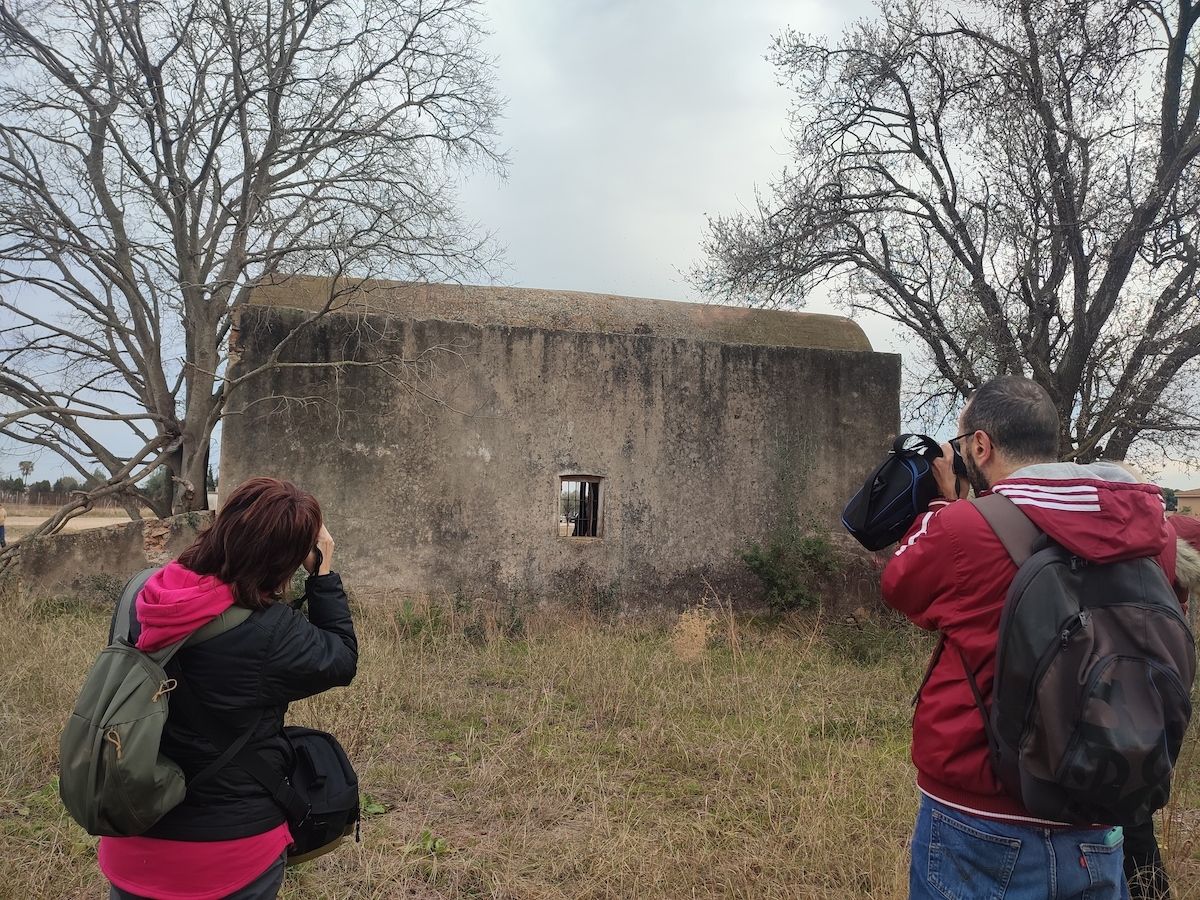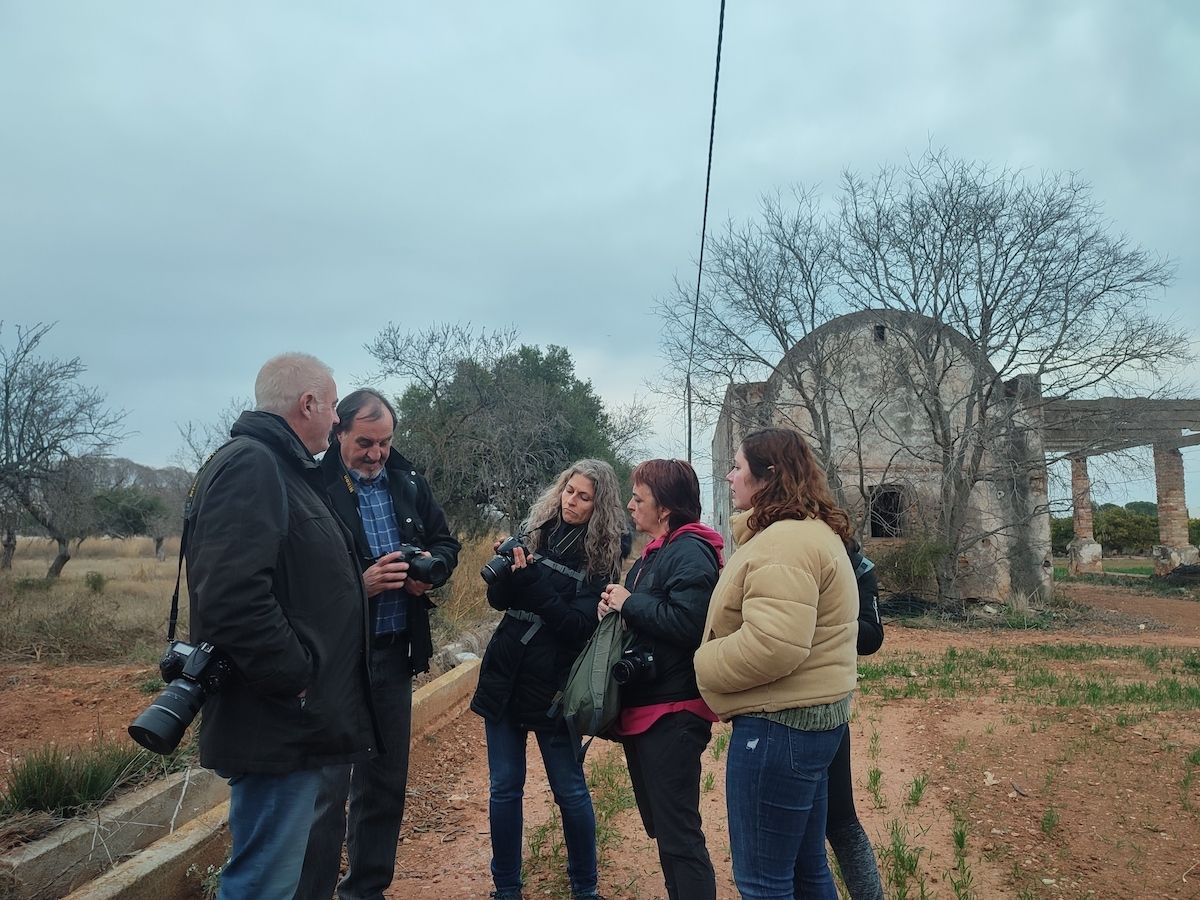
TRANSVERSAL AESTHETICS / SILENCED ~ REACTIVATED
Idensitat + Consorci de Museus de la Comunitat Valenciana 2023 - 2024
Transversal Aesthetics is an Idensitat project taking place in a number of Spanish locations, and within the Valencian Region, thanks to the collaboration of the Consorci de Museus de la Comunitat Valenciana. Transversal Aesthetics aims to realise projects involving research, mediation and artistic production connecting themes with local contexts, and so activating a variety of social spaces through the transversality of artistic practices. There have been three previous editions since 2018, each dealing with a specific theme (Ecosystems of leisure, Ecosystems of Fiction and Community~Immunity), all of which used a methodology based upon connections between individuals such as artists, agents involved in other social activities, and agents working in the cultural, educational or institutional fields. Transversal Aesthetics made use of a variety of formats, seeking new ways of understanding production based upon residencies in local contexts. For this fourth edition, working processes will be developed around the concepts of silenced ~ reactivated.
THEME: SILENCED ~ REACTIVATED
METHODOLOGY AND LOCAL CONTEXTS
OPEN CALL FOR SUBMISSIONS
SELECTED PROJECTS
ACTIONS IN THE FRAMEWORK OF THE PROJECT
THEME: SILENCED ~ REACTIVATED
While the concept of the silenced refers to a condition of invisibility, disconnection, isolation, the concept of the reactivated leads us to the beginning of a new vitality that happens after a process of interruption, disconnection or lethargy. When we relate these circumstantial conditions to certain spaces, we may argue that there is a process of transience or temporality that defines the very vitality of spaces, which pass from one state to another through intermittent cycles, sometimes redundant and sometimes random. No place can be both silenced and reactivated. Silence is also recollection, introspection, reflection, while activation may be understood as the impossibility of stopping, of growing, of doing, of disconnecting, of not intervening. When silence is due to imposition, the need for reactivation becomes immediately apparent, in the same way that when a state is established in which it is impossible to escape over-activation, the desire for seclusion, for silence, arises, understood in this case as an activist positioning, or a transformative stance. Both silence and reactivation are states which can, and which usually do, combine, and it is in this constant flux that the possibilities either of inhabiting spaces differently, or of experiencing the rhythms of motion between silence and reactivation, become apparent. We define this in-between place with the symbol ~, as something which stands between two stages which from the start are posited on the basis of a certain incompatibility, as well as a clear interdependence.
Following in this direction, we are interested in examining the transition between a silenced space and its reactivation, and the role that art can play in this fragile change of structure. A movement ~ which, although sometimes perceived as simple or even subtle, contains a great capacity to 'reactivate' a space, a social context, or a renewed attitude in relation to the uses made of the spaces, or the activities which take place in them. We consider that in this transition, artistic practice may act as a catalyst and an accelerator for the transformation between these two conditions, crystallising and causing the appearance of an intermediate space, moving between one state and another, and generating a variation which in many cases is ephemeral and even momentary, but which is capable of modifying, of questioning, or of making rigid structures flexible.
In this new edition of Transversal Aesthetics in the Valencian Region, the idea embodied by the symbol ~ is deployed in three different contexts, places or spaces in a transitional phase between the silenced and the reactivated. Based upon this approach, the programme which we offer is located in the interstice between these two states; activating with the ~ a series of research-based, creative and/or mediational practices capable of stimulating, producing or evidencing a movement or transition from the silenced to the reactivated, and even vice versa.
METHODOLOGY AND LOCAL CONTEXTS
Working in accordance with the above plan, the three cities which will define the working contexts related to the theme are: Alicante, in association with the Centro Cultural Las Cigarreras; Benicarló, in association with the MUCBE (Museu de la Ciutat de Benicarló); and Valencia, with the support of the CCCC (Centre del Carme de Cultura Contemporània). In each of the above-mentioned locations, spaces for collaboration with other social environments will be opened up via three different contextualised artistic practices.
The projects will be selected on the basis of a public open call for submissions which will focus upon identifying environments, with the aim of establishing an artistic practice oriented towards conceiving (and bringing about) reactivation or silencing, while opening up a space for debate and critical reflection around the ideas behind these concepts.
Artists participating in the three cities must share methodologies, and a sensitivity to issues raised by the proposed theme; issues such as the recovery of voices, the urban imaginary, working in a neighbourhood or urban context, the social or educational environments, and in general, the thematic and methodological framework described in the proposal.
Idensitat will act as mediator, coordinator and co-promoter of the various working processes, aiming to create social spaces by linking contexts to spaces of creation.
Alicante: a two-month residency of research and creation around the proposed theme will take place between October and November 2023. The selected project must propose a working context, based on the conceptual framework described within the open call. The residency will take place at the Centro Cultural Las Cigarreras in Alicante, and will be activated jointly with Idensitat
València: A practice developed intermittently using face-to-face and distance activations, starting in January 2024, linked to mediation practices. This practice, linked to processes of mediation and production, will be supported by Idensitat, with the collaboration of the CCCC. The València residency is planned to be non-intensive, corresponding to the idea of activation - deactivation proposed in the open call. Therefore, applicants must take into account that the material resources will be equal to those provided for the intensive two-month residencies. The València residency requires a hybrid and flexible calendar, including on-site and distance action, using this non-intensive structure, and following its methodological direction and distribution of resources.
Benicarló: A two-month residency between October and November 2023, in collaboration with MUCBE, with the possibility that the museum itself may be the subject of work, or within the local, social or neighbourhood associative context of Benicarló with support and accompaniment from Idensitat and local agents.
ALICANTE
Shell Talk / Sally Maclachlan and Eva Joy
A collaborative community project, with workshops and talking seashells to amplify the stories that connect us to the sea and to each other. There have been activities out in public spaces such as collaborative drawings in the sand, watercolour painting, cyanotype printing, or beach cleaning, in order to reactivate port and coastal spaces. The materials collected had been used to make woven garments, loudspeaker recycling sessions, and the construction of three sculptures in the shape of Pinna Nobilis, the characteristic shell of the Mediterranean which is in danger of extinction due to global warming. By listening to one of the shells you can hear local stories about the environment, home, nostalgia, interconnectedness, and vulnerability, stories which were told during a series of interviews with neighbours from Alicante, fishermen from the Senegalese fishing community, researchers from the University of Alicante, among others. This project aims to connect especially with the voices of dockers and fishermen, environmental defenders, and migrants, creating a wave of sound that connects with the sea. As a final residency activity, the talking Shells paraded from the beach through the city centre to Las Cigarreras, where they were installed.
BIO
Dedicated to joyful collaboration, artists Sally Maclachlan and Eva Joy’s practices culminate in their interest in human/environment interactions, illuminating old and new connections. Their work encourages a culture of support, creativity, and resilience. It is committed to using art as a tool to make a meaningful impact, engaging audiences to make the changes they wish to see in their communities and the world. Eva Joy (@j0y_artist) is a multidisciplinary art-activist whose ideas circulate around protest and utopia. She studied in London, Manchester and Barcelona and has travelled across Latin America developing her artistic practice and Spanish language skill. Sally (@rua_art__) is an interdisciplinary artist who’s practice ranges from film making, to installation, poetry and curation. Through community action, she uses her skills to make art accessible for all and is interested in how the joy of creativity can have a positive social impact.
BENICARLÓ
What noise do artworks make? / Claudio Beorchia
What sound do the artworks exhibited at MUCBE make? During his residency, the artist has been working with MucBe's photographic collection in an attempt to answer this question. His is a participatory project which has involved a group of Benicarló residents, and the organising of various urban walking tours. By means of workshops and urban walks, he envisions what the pictures of urban, maritime, and rural spaces in the Museum's photographic collections might sound like, making "soundtracks” of this archive. Although the project lends prominence to the Museum, it draws upon the city as a whole, bringing its sounds, its environments, and its spaces to the museum through soundtracks developed together with the inhabitants. These soundtracks have been presented at the end of the residency together with the archives and materials from the walking tours around the city, the farmlands, and the port where the sound recordings took place.
BIO
Claudio Beorchia (Vercelli, Italy, 1979) is an interdisciplinary artist who often works through relational and participatory practices. He studied Design and Visual Arts at Iuav University in Venice and at the Academy of Fine Arts in Milan. He holds a Ph.D. in Design Sciences at Iuav University Doctorate School.
Through commissions, awards and residencies, he has carried out projects and shown his works in Italy and abroad. His personal art practice, based on a site-responsive and context-based approach, often leads him to work through residency programs. He has participated in numerous residencies in Italy, as many in Europe, but also in China, Japan and four times in the United States.
VALÈNCIA
Wandering Landscape / Wei Yang
Wandering Landscape aims to focus on the experiences of the Chinese diaspora in València, Spain, as it is the first city in Spain that has a Chinatown. Through photography, oral history, archives, and material reconstructions, the project will examine the intersection of geopolitical relationships and the theme of intimacy, belonging and sense of relative lag in time as a new possibility which became an activation of their existence and representation against the silent cultural assimilation.
As València was one of the first cities for the Chinese diasporic community to immigrate to Spain, its melancholic urban development remains in certain areas, along with cultural landscapes and nostalgic memories, makes me feel familiar with and curious about this city at the same time. During my residency, I plan to capture customs, sensory experiences, language through exploring the city, and conduct on-site research on materials, juxtapose reflections on the de-accelerated and subtle domesticity, to formalize the initial archive of my residency experience.
BIO
Wei Yang (b.1994, Liuzhou) is a visual artist based between Liuzhou, China and Frankfurt, Germany. Yang’s work investigates human being as a geographical subject, drawing from Chinese diasporic memory and layering myth, history and personal landscape, to create transcultural images under the themes of intimacy, belonging, and time. Using materials close to the body and home, Yang questions the construction of material value and symbols of authority. In doing so, he portrays the domestic as a site of resistance that confronts grand narratives and archival marginalization. Yang’s work has been exhibited in the Stedelijk Museum in Amsterdam, as well as in Frankfurt and Beijing.
ACTIONS IN THE FRAMEWORK OF TRANSVERSAL AESTHETICS / SILENCED ~ REACTIVATED
BENICARLO
A collaboration with the photography group from Benicarló’s Universitat Popular
In Benicarló, thanks to the collaboration with the Universitat Popular, a strand of work began, which in some ways will take over from Italian artist Claudio Beorchia’s residency, which took place between October and November 2023. This residency activated the MucBe photographic archive, in association with five organisations and a group of neighbours from Benicarló, generating a soundscape using materials from a series of itineraries linked to the photographs. Now, the work with some of the collaborating organisations continues, using images in the development of production and mediation activities, to take place during the Universitat Popular’s architecture and landscape classes in the artistic photography course. In keeping with Idensitat’s background in artistic projects connected to architecture and public space, we proposed highlighting social and non-monumental architecture, with an emphasis upon landscapes related to the agriculture and fisheries trades, which are strongly identified with the municipality of Benicarló: the sailors' sheds and the vaulted houses. These architectures, usually looked down upon or despised for their working-class and functional aspects, are interesting social structures with great artistic potential. Self-construction, collective learning, reuse and recycling of resources, and DIY - DOIWO (Do it yourself - Do it with others) design are now fundamental pillars of contemporary architecture, and they are increasingly present in the research and conceptualisation of the idea and imagination of what architecture now is.
- January 9th, 2024: Presentation of the proposal at COM SONEN AQUESTS LLOCS? (How do these places sound?) exhibition by Claudio Beorchia (artist in residence at MucBe, October and November 2023). The proposal for collaboration was presented to the students, the exhibited materials were reviewed, and other examples of Idensitat projects related to architecture and the arts in public space were shared.
- Sailors' sheds. On January the 30th, the UP’s Creative Photography class held a photo session in Benicarló's fishing port. The group was accompanied by Eva Arnau, teacher of photography at the UP, and Ainhoa Cerdà , territorial mediator. During the day, the sailors' huts which stand next to the market were photographed. These small modules were constructed to store the tools which sailors used. José Vicente Fresquet and José Burriel showed the group the inside of two of the sheds and made a brief explanation. These buildings are an example of popular architecture rooted in life and work at sea. These sheds will disappear from the landscape in a few months due to modifications in access to the port.
- Cases de Volta. The second session took place on February 6th. On this occasion the group, accompanied by Eva Arnau and Ainhoa Cerdà, went to the terrain surrounding the Chapel of Sant Gregori de Benicarló. In this area there are three Cases de Volta, dwellings that the farmers used temporarily while working in the fields. The building served as a bedroom, kitchen, warehouse and stable. During the guided tour by Rafa Domínguez from the ABRIL association (Associació Benicarlanda per la Recuperació i la Investigació del Llegat), and organisation dedicated to the Recovery of, and Research into Benicarló’s Heritage, he gave an interesting explanation about this type of vernacular architecture; its use, construction process and materials, differences between buildings of this type, etc. The group reflected upon the importance of preserving the local architectural heritage, and took photographs of the buildings.
VALENCIA
A collaboration with teacher Ya Hui Liu Zhou and students from the Chinese class at ESIC University.
Based upon methodologies such as derive, mapping, photography and interviewing, related to artistic research, and connected specifically with Wei Yang's Wandering Landscape residency, students approach learning Chinese through immersion and field work, in a number of itineraries in Valencia’s Chinatown.
More information about previous editions


